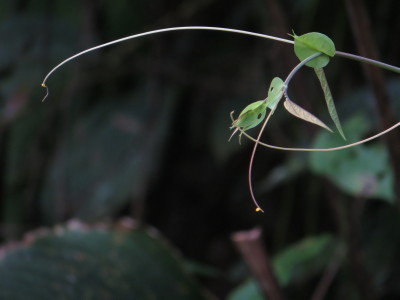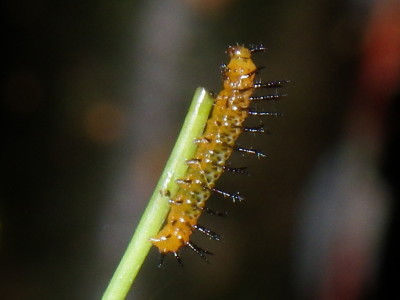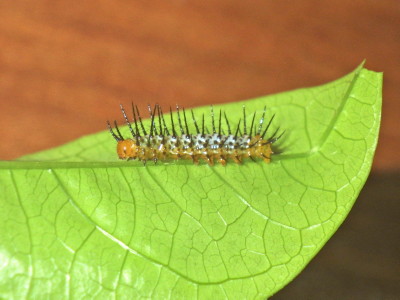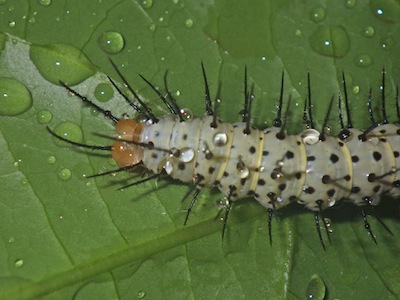| Heliconius cydno galanthus (Doubleday 1847) |
H. cydno is part of the numata-melpomene species group ("group II") of Heliconius. This taxonomic group is associated with host plants in the subgenus Passiflora, but H. cydno are often capable of feeding and surviving on a wide range of Passiflora species (Smiley 1985a). H. cydno is found in old growth forest and regrowth >20 years old, a habitat where Passiflora vines are widely spaced and hard to find. Perhaps as a result of this scarcity, H. cydno lays her eggs on the new growth of any Passiflora capable of supporting her larvae. At La Selva this means every species except P. lobata. H. cydno is capable of consuming plants with large amounts of cyanogenic glycoside. Range: Mexico to Colombia and Ecuador.
In spite of this capacity to use nearly all Passiflora, restriction to the forest habitat means that only a few host species support most of the H. cydno population. P. vitifolia, P. ambigua and P. pittieri are commonly used species. |
 |
 |
| Adult H. cydno with small pollen load on proboscis. Like other Heliconius, H. cydno seeks certain flowers that provide pollen for consumption. Females use the pollen nutrients to lay eggs and survive longer that most other butterfliy species. Lake other Heliconius, males use the nutrients as a nuptial gift in the form of a spermatophore. |
In forest, the most commonly found butterfly eggs on Passiflora are H. cydno eggs, usually laid on tendrils or leaf tips. Female H. cydno are attracted to Passiflora shoots that reach out horizontally with shoot tip and tendrils extended, as in this photo. |
 |
 |
| A tendril is the safest place for a young H. cydno larva. The stem and leaves of many species of Passiflora may be occupied by predatory ants attracted to the nectar glands on the leaves and petioles. |
Moulting larva on tendril. |
 |
 |
| Small 4th instar larva. |
Large 5th instar larva. H. melpomene larvae look just like these, highlighting the close relationship between H. cydno and H. melpomene. |
 |
 |
| H. cydno pre-pupa |
H. cydno pupa |
 |
|
| H. cydno drinking from Hamelia flower. |
|
| |
|
| |
|
| |
|
| |
|